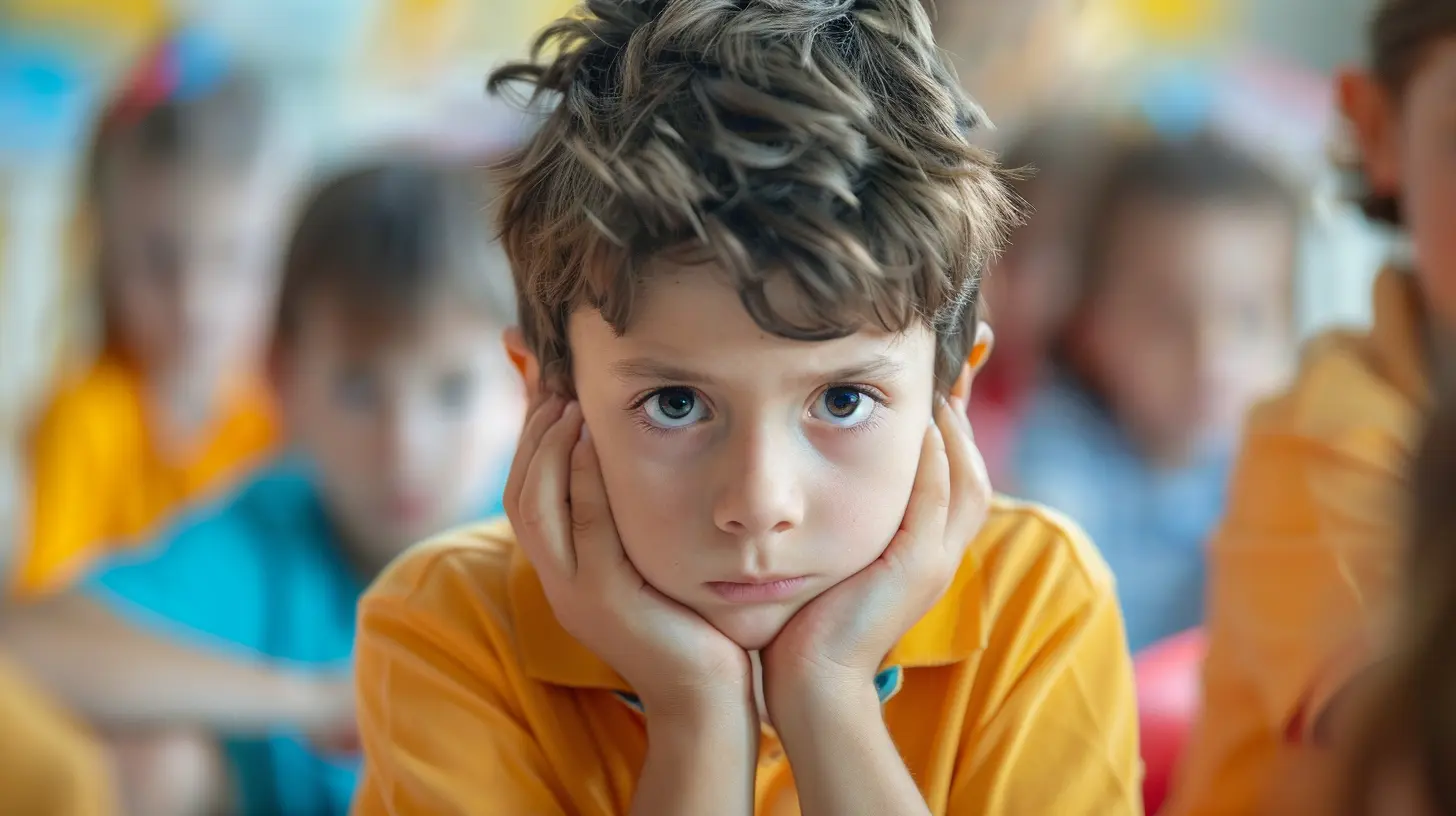Understanding Emotional and Behavioral Disorders in the Classroom
5 June 2025
Introduction
Imagine walking into a classroom where a student suddenly throws a chair across the room. Another sits quietly, refusing to engage, their eyes filled with unspoken pain. Yet another constantly interrupts, unable to sit still for even a moment. These are not just "troublemakers" or "difficult students"—they may be struggling with emotional and behavioral disorders (EBD).
Emotional and behavioral disorders can turn a classroom into an unpredictable environment, not just for teachers but for students as well. But what exactly are these disorders? Why do they exist? And most importantly, how can educators support students dealing with them? Let’s dive deep into the world of EBD and uncover the truths that many overlook. 
What Are Emotional and Behavioral Disorders?
Emotional and behavioral disorders (EBD) refer to a range of mental health issues that impact a child’s ability to learn, interact socially, and regulate their emotions. Unlike occasional misbehavior, these disorders are persistent, often interfering with academic performance and peer relationships.The Individuals with Disabilities Education Act (IDEA) defines EBD as a condition that significantly affects a child's educational performance over a long period. This includes difficulties in forming relationships, inappropriate behaviors, excessive fears, or prolonged depressive states.
But here’s the tricky part—it’s not always easy to spot. Some students act out aggressively, while others withdraw completely. This duality makes understanding EBD both fascinating and frustrating. 
Common Types of Emotional and Behavioral Disorders
EBD isn’t a one-size-fits-all diagnosis. It comes in many forms, each with its own challenges. Let’s break it down:1. Oppositional Defiant Disorder (ODD)
- These students seem to challenge authority at every turn.- They argue, refuse to follow instructions, and deliberately annoy others.
- While all kids test limits, ODD behaviors are persistent and extreme.
2. Conduct Disorder (CD)
- More severe than ODD, conduct disorder involves aggressive and sometimes violent behaviors.- These students might engage in bullying, theft, truancy, or even destruction of property.
- Without intervention, these behaviors can escalate into adulthood.
3. Anxiety Disorders
- While anxiety seems harmless, it can paralyze a student academically and socially.- Constant worry, panic attacks, and avoidance behaviors are key signs.
- Some students might refuse to speak (selective mutism) or experience intense social anxiety.
4. Depressive Disorders
- Depression in children manifests differently than in adults.- Instead of sadness, children often show irritability, lack of motivation, and withdrawal.
- Teachers might notice a sudden drop in grades, changes in energy levels, or emotional outbursts.
5. Attention Deficit Hyperactivity Disorder (ADHD)
- Though technically not classified under EBD, ADHD often coexists with these disorders.- Students with ADHD struggle with impulse control, hyperactivity, and inattentiveness.
- They may be disruptive but aren't necessarily defiant.

What Causes Emotional and Behavioral Disorders?
If only there were a simple answer. The truth is, EBD arises from a complex mix of factors. Let’s take a closer look:1. Biological Factors
- Some children inherit a predisposition to mental health issues.- Chemical imbalances in the brain, prenatal drug exposure, and neurological conditions can all contribute.
2. Environmental Influences
- A child's home life plays a significant role. Abuse, neglect, poverty, or unstable family situations can trigger emotional struggles.- Bullying, academic pressure, and peer rejection can also be catalysts.
3. Psychological and Social Factors
- Low self-esteem, unresolved trauma, and difficulties in processing emotions can exacerbate behavioral issues.- Some children learn maladaptive behaviors simply by observing their surroundings.
The bottom line? EBD is rarely caused by a single factor. It’s usually the result of various influences converging at once. 
Spotting the Signs: How Teachers Can Identify EBD
Teachers are often the first to notice that something isn’t right. But spotting EBD requires keen observation and patience. Here are some red flags:- Frequent Outbursts – Sudden anger, aggression, or extreme irritability.
- Excessive Anxiety or Fear – Constant worry, avoidance of certain activities, or panic attacks.
- Social Withdrawal – Avoiding peers, refusing to participate, or showing signs of depression.
- Defiant and Disruptive Behavior – Persistent rule-breaking, arguing, and opposition to authority.
- Poor Academic Performance – Not due to cognitive limitations, but because of emotional struggles.
- Self-Injury or Expressions of Hopelessness – In severe cases, students may engage in self-harm or voice suicidal thoughts.
Teachers need to remember that behavior is communication. Instead of punishing a child for acting out, it’s crucial to ask: “What is this behavior trying to tell me?”
Strategies for Supporting Students with EBD
So, what can educators do when faced with students struggling with emotional and behavioral disorders? Here are some effective strategies:1. Create a Structured Classroom Environment
- Children with EBD thrive on routine and predictability.- Clear expectations, consistent rules, and structured activities help them feel secure.
2. Build Strong Relationships
- A student’s behavior often improves when they trust their teacher.- Take time to build rapport—show empathy, listen, and validate their feelings.
3. Use Positive Reinforcement
- Recognize and reward positive behaviors rather than focusing solely on negative actions.- Simple praise or incentive systems can work wonders.
4. Teach Emotional Regulation Skills
- Many students with EBD lack the skills to manage their emotions.- Teaching deep breathing, mindfulness, or self-regulation techniques can be life-changing.
5. Implement Individualized Support Plans
- Some children need one-on-one interventions, behavior contracts, or modified work expectations.- Collaboration with counselors and special education professionals is often necessary.
6. Avoid Power Struggles
- Some students thrive on pushing buttons. Engaging in a power struggle only escalates the situation.- Instead, practice de-escalation techniques and remain calm.
7. Encourage Peer Support and Inclusion
- Social isolation worsens EBD symptoms.- Implement group activities where students can develop friendships in a supportive environment.
The Role of Parents and Mental Health Professionals
Teachers alone cannot address EBD. Parents and mental health professionals play critical roles in intervention.Parents:
- Should be informed and involved in intervention strategies.- May need education on managing behavioral issues at home.
- Should work alongside educators to reinforce consistency.
Mental Health Professionals:
- Provide therapy, counseling, and behavioral interventions.- Can diagnose disorders and recommend treatment plans.
- Offer support to both students and educators in managing EBD.
A strong support system creates the best outcomes for students struggling with emotional and behavioral disorders.
Conclusion: Changing the Narrative
Too often, students with EBD are labeled as "problem children" or "lost causes." But those labels do nothing but push them further into isolation. Instead of punishing, educators should seek to understand. Instead of dismissing, they should support.Behind every outburst, there’s a story. Behind every withdrawn student, there’s a struggle. Understanding emotional and behavioral disorders isn’t just about classroom management—it’s about giving students a chance to succeed despite their challenges.
As educators, parents, and society as a whole, we must shift our perspective. Because when we do, we don’t just change a child’s education—we change their future.
all images in this post were generated using AI tools
Category:
Special EducationAuthor:

Anita Harmon
Discussion
rate this article
3 comments
Elijah McCaffrey
Thank you for this insightful article; it offers valuable perspectives for educators.
June 18, 2025 at 3:24 AM

Anita Harmon
Thank you for your kind words! I'm glad you found the article helpful.
Kaitlyn Webster
Every child has the potential to thrive! Understanding emotional and behavioral disorders is key to fostering a supportive learning environment. Together, we can empower students to reach their fullest potential!
June 10, 2025 at 10:34 AM

Anita Harmon
Thank you for your insightful comment! I completely agree that understanding emotional and behavioral disorders is essential for creating a nurturing classroom environment where every child can thrive.
Ardyn McClary
Empowering students with emotional and behavioral disorders transforms classrooms into inclusive spaces. Let's embrace compassion and understanding to unlock every child's potential for success!
June 5, 2025 at 4:20 AM

Anita Harmon
Thank you for highlighting the importance of compassion and understanding in creating inclusive classrooms! Empowering all students, especially those with emotional and behavioral disorders, is key to unlocking their full potential.



